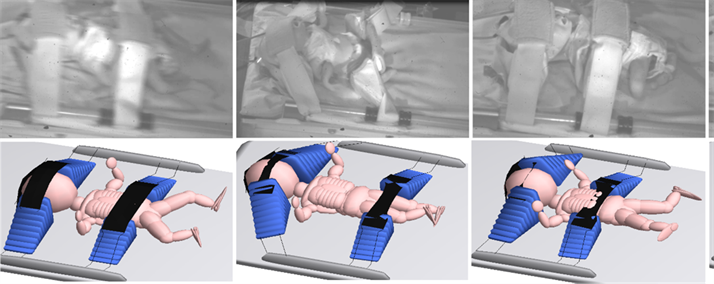Biomechanics

Our expertise in biomechanics is used as a key part of the design process in many of our medical devices, ensuring that the devices will perform as required, in tune with the body's natural movements.
We support all stages of the medical device development lifecycle. Expertise includes:
- Soft tissue mechanics
- Hard tissue mechanics
- Imaging (MRI, ultrasound, xray)
- Finite element modelling
- Spinal biomechanics
- Spinal device evaluation
- Analytical modelling of nutritional flows in intervertebral discs
- Biomechanical modelling of airway tissue
- Developing medical devices
Injury mechanisms and tolerance
Our biomechanical modelling expertise is also used to support improvements to pedestrian, cyclist and driver safety.
We model head injuries and aortic ruptures, which are the top two most common ways of dying in a car crash; and we are the only place in the UK that has the capability of doing crash test impact assessment for cadaveric tissues.
Our capabilities have been used to:
- Provide expert evidence following accident and trauma investigation
- Feed into the UK Parliament Transport Select Committee’s work on reducing fatalities on British roads
- Support design of vehicle restraint and safety systems